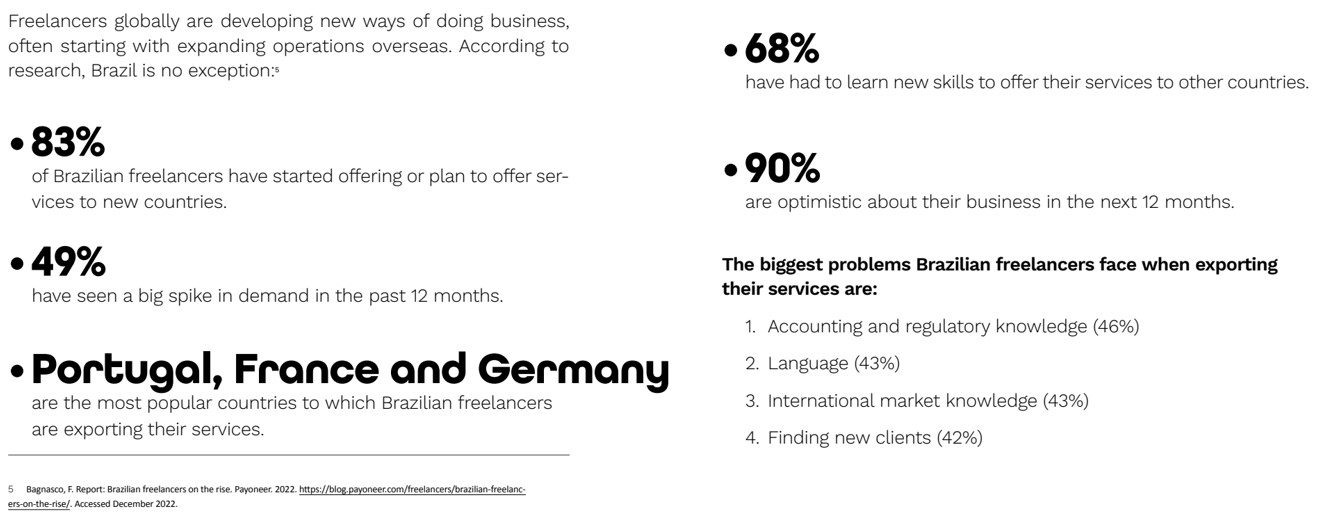75% of Small Businesses Dissatisfied With Cross-Border Payment Solutions

International transactions for small businesses should be as easy to clinch as domestic sales.
The rise of digitally powered businesses has opened new possibilities for innovative retailers and platforms. Beyond eCommerce, international business overall has benefited. Local entrepreneurs may now develop a clientele around the globe as easily as they can within their own cities. As streamlined digital payments simplify cross-border transactions, many entrepreneurs are expanding their focus to include international deals along with domestic ventures.
Ninety percent of companies globally qualify as small- to medium-sized businesses (SMBs), representing more than 50% of employment worldwide, according to International B2B Payments: A Guide For Entrepreneurs And Digital Businesses. Many of these businesses hold deep roots in local communities. However, some have increasingly become entrepreneurial on a global scale, launching international ventures online.
Lacking access to the necessary financial services to power their international reach is a key constraint. Twenty-seven percent of SMBs see the complexity of cross-border payments as a hindrance to their ability to grow, and just 23% of small businesses found their current cross-border payment solutions to be very or extremely satisfactory.
Freelancers face similar roadblocks as traditional SMBs, as detailed in the PYMNTS/Payoneer collaboration on cross-border payment challenges.
Inadequate cross-border payment options already represent a challenge for SMBs seeking to expand into the Asia-Pacific (APAC) region, according to The Emerging APAC Opportunity Playbook, a PYMNTS collaboration with Citcon.
PYMNTS’ research shows that 23% of retailers like these already sell to APAC customers, while more plan to expand into the region within the next year. The average merchant that is selling to the APAC market, or planning to do so, generates 42% of its revenue internationally.
Among SMBs seeking to streamline their cross-border payment solutions, a primary challenge is a lack of the technical or human resources required to manage the digitization process independently.
Preparing to send and receive payments digitally in differing regions using a range of currencies may require the involvement of multiple banks and payments tools. Creating this capability from scratch would mean coordinating with banks and payment services providers, as well as monitoring current and emergent compliance mandates for each region where a company does business. This is simply too much for most SMBs to accomplish.
Despite these challenges, cross-border business is on the rise among SMBs. According to a PYMNTS report, 38% of SMBs saw an increase in cross-border payments sent or received in 2021, and 81% of merchants who used online cross-border payment methods say these transactions have helped their businesses grow. This may not be surprising, as nearly three-quarters of consumers said faster processing would drive them to use cross-border payments more often.
Digital transformation that enables reliable cross-border payments is a lifeline for growing SMBs seeking to scale their business internationally. With access to the same level of technology and service that big enterprises use, an SMB has the opportunity to grow without hindrance in any region.
For some SMBs, the answer may be to seek a third-party solution that can streamline payments through a single tool, while ensuring regulatory compliance when sending and receiving funds across borders. By using a single third-party digital platform that manages transaction monitoring and payments processing, SMBs may indeed find international transactions as easy as domestic sales.
